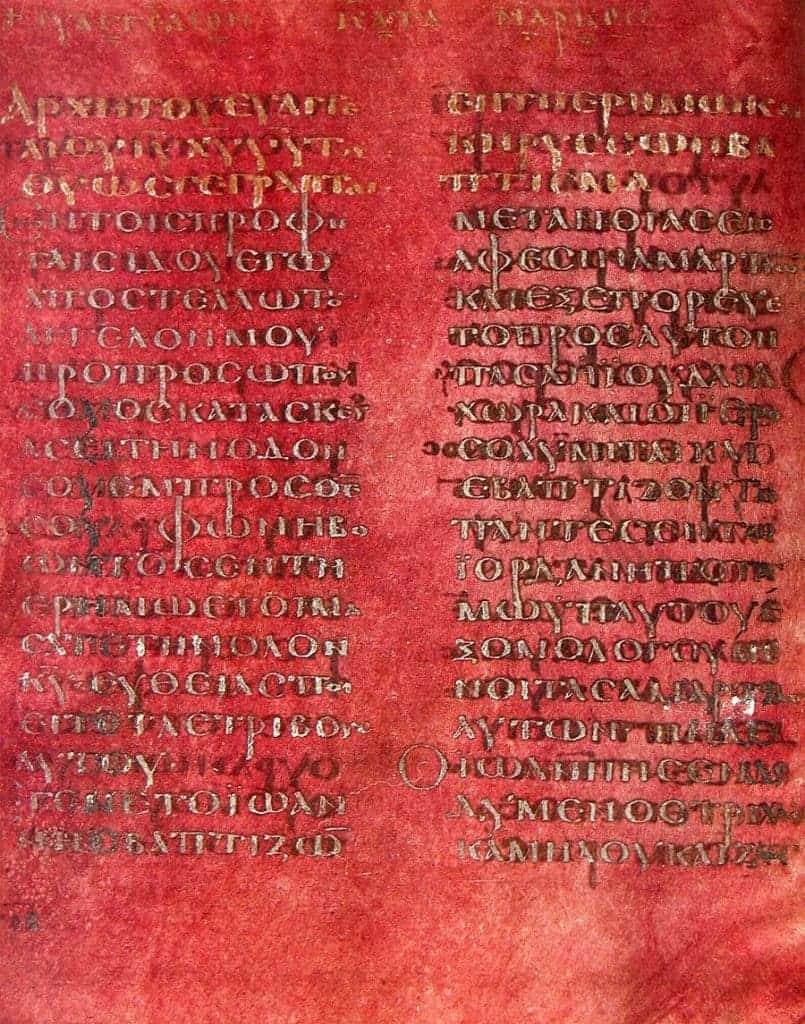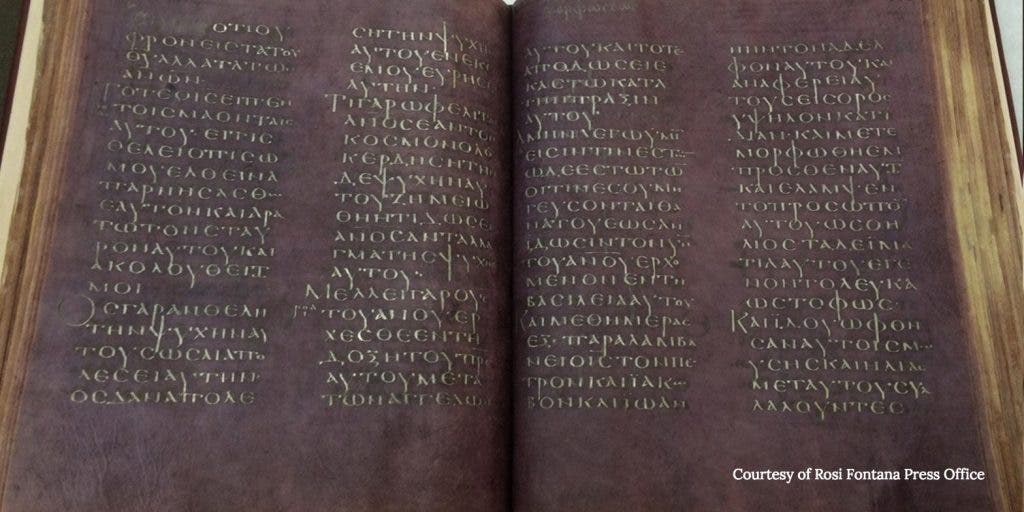Restoration experts have identified the materials that went into making the purple dye of the Codex Purpureus Rossanensis, one of the oldest known New Testament manuscripts, and they aren’t exactly ecclesial: the ink was made from a combination of lichens and fermented urine.
The debate over exactly how the ancient bookmakers, most likely hailing from today’s Syria, crafted the amazing book using the simple tools and limited resources available to them 1,500 years ago has been ever since the manuscript was found.

Image via wikimedia
“Even though early medieval illuminated manuscripts have been deeply studied from the historical standpoint, they have been rarely fully described in their material composition,” lab director Marina Bicchieri, from the Central Institute for Restoration and Conservation of Archival and Library Heritage (ICRCPAL) in Rome, told Discovery News.
The strikingly beautiful book is usually housed in the Museum of the Diocese in Rossano, a town in southern Italy. The work is 188 pages long, containing the gospels of Matthew and Mark written down in gold and silver ink. Its exact history is unknown, but it’s believed that Italian monks brought the manuscript from Syria. It was re-discovered in 1879 in the Cathedral of Rossano, and since then the debate over how it was written rages on.
Sadly, much of the book has been lost over time, and the book is extremely fragile. Most of it was destroyed in a fire inside the cathedral, and Bicchieri’s team also had to deal with the damage left by earlier restoration efforts. These conducted by an unnamed team around 1917 and irreversibly modified some of the pages.
“Most likely, what we have today represents half of the original book,” museum officials suggest.
The discovery of the purple ink’s materials was made during the book’s restoration by the ICRCPAL. Aiming not to further damage the work, the team only mended a few of its stitches to keep it from falling apart, then used X-rays to examine the composition of the inks in the codex. They compared their findings with dyes recreated in the lab using recipes found in the Stockholm papyrus – a Greek ink recipe book that’s been dated to around 300 AD.
The team reports that the purple dye, thought to have been made out of Murex (a species of sea snail,) was actually produced with orcein, a dye extracted from the lichen Roccella Tinctoria, and sodium carbonate. The latter was obtained from natron — a salt-like material used to mummify bodies in ancient Egypt, Lorenzi explains. But, to bring out the best shade of purple, the dye-making process seems to have involved using fermented urine to mix the compounds.

“Fibre optics reflectance spectra (FORS) showed a perfect match between the purple parchment of the codex and a dye obtained with orcein and an addition of sodium carbonate,” Bicchieri told Rosella Lorenzi at Discovery News.
To you and me this might seem pretty….gross. But in the day it was actually a very practical choice, as urine was the only readily available source of ammonia available 1,500 years ago.
The team is still preparing their findings for publication, and have yet to pass the test of peer-review — but once they do, they could finally end the century long debate around the purple ink.
Was this helpful?



